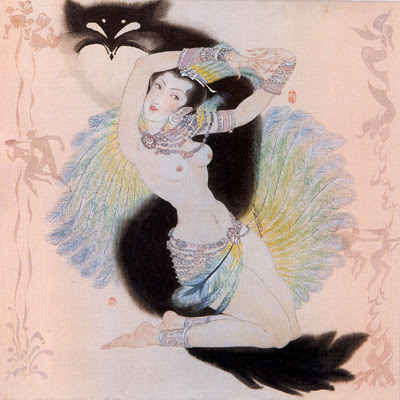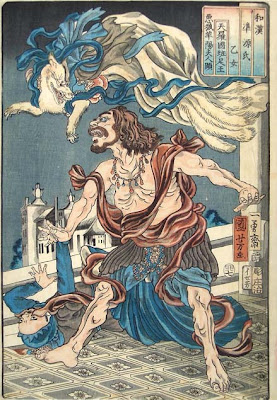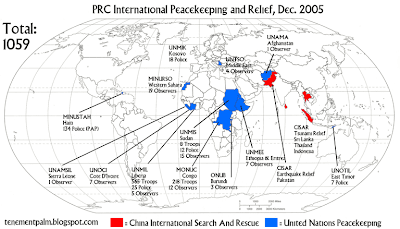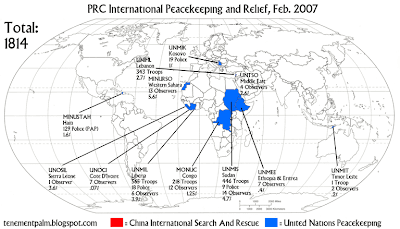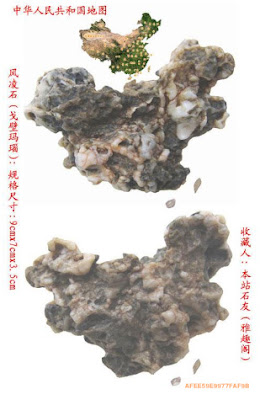“What is the Chinese counterpart to Naruto? Even more to the point, will Japanese producers start making more Pan-Asian type stuff that can be accepted everywhere? Or are they doing so already?”
I’d say they are already, and Naruto is a good example. The international anime hit centers on the main character Naruto, who is the host (unwillingly) for an evil nine-tailed demon fox. Nine-tailed demon foxes appear in ancient Chinese folktales, most notably the Feng Shenbing (封神榜), often translated as “The Creation of the Gods”. Not your straightforward creation story, most of its tales take place in the legend-shrouded early dynasties of Chinese history. In one story, Zhou Xin (紂辛), last ruler of the Shang Dynasty, married Daji (妲己), whose body was possessed by a fox spirit (hulijing 狐狸精) with nine tails. Zhou Xin had offended the spirit and it sought revenge by seducing Zhou Xin into becoming a ruthless tyrant, which led to a revolt. Fox spirits are found in Chinese, Korean and Japanese mythology, and are typically seductive women who rob men of their yang and ruin their lives. Not surprisingly, the term hulijing is now used to refer to a “gold digger”. In another example of how much Pan-Asian crossover there is, the slang term is the name of a popular song by Taiwanese Alan Luo (who speaks fluent Japanese), which also appears to be a cover of a song by Shim Mina, a Korean pop star who found fame when she was photographed cheering at the 2002 World Cup.
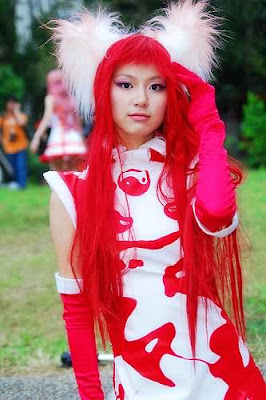 Daji and the Creation of the Gods is a major inspiration for Chinese Cosplayers
Daji and the Creation of the Gods is a major inspiration for Chinese Cosplayers
I’m not sure what the formula is for Japanese cartoons success, but I suspect it has something to do with marketing and collectible card games. It doesn’t help, either, that when people in China call for the removal of a cartoon because it is “derivative of domestic wuxia novels and foreign cartoons”, since that seems to be part of the formula as well. It’s not clear whether China’s domestic cartoon initiatives will encourage more cartoons drawing from mythology. They have made a cartoon about Nezha, the mischievous youth who goes around killing the Jade Emperor’s pet dragons in the afore-mentioned “Creation of the Gods”, but it doesn’t seem to have the same danger or continuous storyline as something like Naruto. Then again I haven’t really watched it. I’ve always wondered if such material sets off the “feudal superstition” alarm for Chinese TV censors. It certainly gets around in other media: Chinese software company Kingsoft has a Feng Shenbing MMO game. And a Chinese painter, Li Zou, recently displayed her series of paintings depicting 100 concubines of Chinese history, including Daji:
And a Chinese painter, Li Zou, recently displayed her series of paintings depicting 100 concubines of Chinese history, including Daji: And I just love this Japanese woodcut by Ichiyusai Kuniyoshi (1798 – 1861), titled THE INDIAN PRINCE HANZOKU AND HIS SERVANT ARE BEING TERRIFIED BY KAYOFUJIN WHO REVEALS HER TRUE FORM AS THE NINE-TAILED FOX and from a series very appropriately titled ‘Japanese and Chinese Parallels to the Tale of Genji’, published by Iseyoshi in 1855. (Purchase for 780 Euros at Mattia Jona in Milan!)
And I just love this Japanese woodcut by Ichiyusai Kuniyoshi (1798 – 1861), titled THE INDIAN PRINCE HANZOKU AND HIS SERVANT ARE BEING TERRIFIED BY KAYOFUJIN WHO REVEALS HER TRUE FORM AS THE NINE-TAILED FOX and from a series very appropriately titled ‘Japanese and Chinese Parallels to the Tale of Genji’, published by Iseyoshi in 1855. (Purchase for 780 Euros at Mattia Jona in Milan!)





